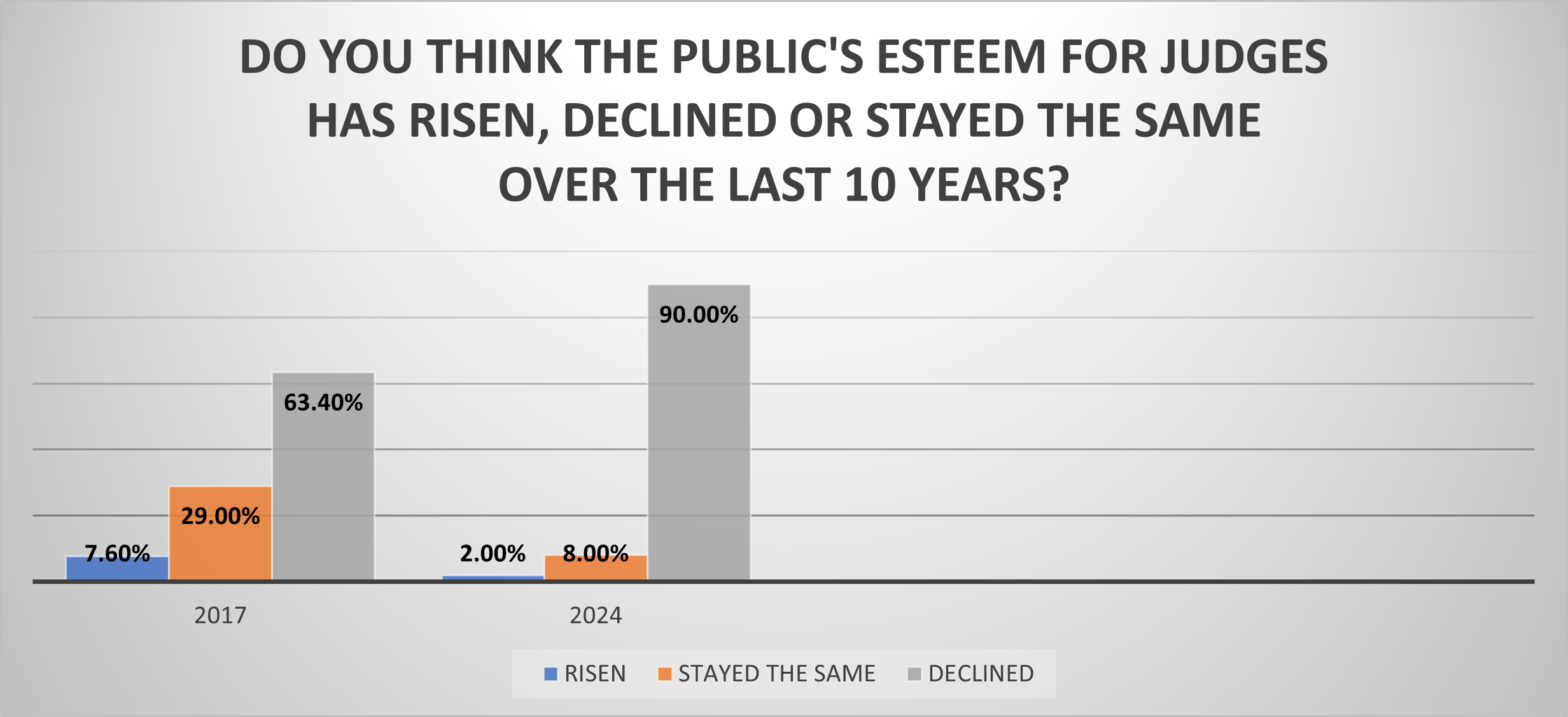
Carl M. Dawson, M.S., LPC, MAC, Q-SAP
“First the man takes a drink, then the drink takes a drink, then the drink takes the man.”
Edward Rowland Sill (1886)
At the moment a drug enters your brain, a coordinated set of highly predictable and progressive activities occur, which neuroscientists refer to as “hijacking the brain” (Polk, 2015). These scientists, who work in the field of addiction, study how consumable chemicals, designed either in a professional laboratory or someone’s kitchen, can temporarily or permanently alter the normal activities of our brain. This process can be accomplished by either imitating or masquerading our own brain chemistry, by demanding an excessive release of the pleasure chemicals (dopamine, serotonin, nor-epinephrine) produced and housed in our brain, or by initiating both actions simultaneously (Polk, 2015).
Therefore, we ask, how does the brain behave when we consume a chemical drug? Why do individuals, under the influence of particular drugs or engaging in a specific behavioral activity, act the way they do? Are some of us, either through our genetic history or personality type, more prone to develop a chemical or behavioral addiction?
ADAPTATION AND EVOLUTION
The human brain is considered the most unique and complex set of neurological material on the earth. Neuroanatomists (scientists that study the anatomy of the brain) and evolutionary biologists report that our brains have evolved over millions of years, beginning first with a reptilian brain stem, and eventually evolving into a multifunctioning, electrical-chemical communication masterpiece, called the cortex (Medina, 2014; Norden, 2007).
Although neuroscientists do not always agree on the exact workings of the human brain, they all concede that our brain’s purpose is to keep us alive through adaptation and proliferation (Wang, 2010). Evolutionary biologists explain that the reason our hominid species has survived is because our brains possess a unique ability to change and adapt whenever necessary in order to breed, feed, survive and thrive (Sapolsky, 2005). Our brain’s ability to adapt to change as a result of experiences and survival is referred to as neuroplasticity (Norden, 2007). Our brain’s ability to adapt neurologically, while being held hostage or “hijacked”, by either a chemical drug or a strong environmental activity, is not only expected, but how our brains were designed to survive and thrive (Sapolsky, 2005).
GENETICS AND ADDICTION
No gene has yet been identified as the “addiction” gene. However, the Collaborative Study on the Genetics of Alcoholism (Bierut, Saccone, Rice, Goate, Foroud, Edenberg, 2002) reports that some genes, responsible for the biological addictive process, possess genetic markers designed to specifically assist the brain and body in metabolizing alcohol and other drugs. These genes are also believed to be responsible for producing, distributing and utilizing the brain’s and body’s pleasure chemicals, like Endorphins, Enkephalins, Gamma-aminobutyric acid (GABA), Dopamine, Serotonin and Nor-epinephrine.
Yet the prevailing belief among many genetic investigators, is that an individual’s immediate environment, including his or her social surroundings, interpersonal influences and general experiences, have at least an equal, if not more direct influence on predicting addictive behaviors, than simply genetics alone (Medina, 2014; Polk, 2015).
The chemistry the brain produces and uses is highly complex, but understanding it explains how chemical drugs and behavioral activities hijack the brain. Our brain produces around 60 types of chemicals known as neurotransmitters and neuromodulators (Norden, 2007). They are labeled neurotransmitters and neuromodulators because they transmit and modulate the flow of chemical information throughout the body’s nervous system.
DOPAMINE
Dopamine has several responsibilities with regards to normal brain functioning. It is primarily the product of two brain structures, both located in the middle regions of the brain (Pick, Howden, 1977).
Dopamine is such a dynamic neurotransmitter that the brain’s general monitoring and balance system, the hypothalamus, keeps a close tab on how much and how often it is released in the brain (Norden, 2007). If too little amount is released into the brain, then typical Parkinson’s type signs and symptoms are likely to occur. This is because dopamine plays an important role in maintaining muscular movement, control and symmetry. If too much dopamine is released, then the individual will likely display psychotic type thinking, actions and behaviors (Norden, 2007).
Dopamine is believed to produce the most powerful subjective euphoric experiences desired by a person consuming any or all centrally activating substances (Polk, 2015). The more dopamine a drug forces the brain to release, the more potentially rewarding and addicting the drug will be.
Research has also shown that the same active release of dopamine occurs when an individual is engaging in addictive behavioral activities like gambling, food consumption and pornography (Polk 2015). Recent studies also show that the brain pre-releases large amounts of dopamine, with the simple anticipation, thought or suggestion of engaging in any of the above activities (Rescorla and Wagner, 1972).
Neuroscientists consider dopamine as one of the primary neurochemicals that encourages pleasure and reward-seeking behaviors when released in the brain (Polk, 2015). Investigators like Rescorla and Wagner (1972) identified that there was a strong association between memory and pleasure. They found that the stronger the association an individual has with a particular pleasurable activity, the more reinforced the memory becomes, which in turn may trigger intense pleasure seeking thoughts and actions. The association between pleasurable events and our reinforced memory is referred to as “euphoric recall” (Polk, 2015). This point reinforces why most treatment professionals and probation officers will caution newly recovering individuals to avoid friends, parties, bars or social activities where substance use is expected.
Unfortunately most treatment professionals will also report that once a recovering individual begins experiencing an episode of “euphoric recall”, the strong influence of anticipatory pre-released dopamine may interfere with their ability to earnestly avoid a relapse.
SEROTONIN
Serotonin is a neurotransmitter that is produced in the brain stem. The brain stem connects our brain to the spine, which then serves as an interconnecting set of neurological highways, called “tracks” that send and receive information to all the distant regions of the body (Pick, Howden, 1977). Serotonin has several specific biological functions that assist in maintaining and stabilizing our body.
Serotonin has gained a lot of attention recently with respect to the treatment and diagnosis of depression, anxiety and general mood disturbances. Psychiatric medications, like: Prozac, Zoloft, Celexa and Lexapro, are typically prescribed for those conditions (Stahl, 2003). Medications that are known as Selective Serotonin Reuptake Inhibitors (SSRI’s) permit brain-produced serotonin to remain present in the nervous system for longer periods of time than nature designed. As a consequence, medications like SSRI’s, designed to boost the availability of serotonin in the nervous system are routinely recommended by psychiatrists and mental health professionals due to their mood enhancing and stabilizing properties.
On the other hand, centrally activating, illicit drugs that produce an excessive amount and release of serotonin like: methylene-N-methamphetamine (MDMA) or ecstasy, are notorious for creating highly impulsive behaviors (Hart, 2013). Extreme levels of serotonin are known to enhance a person’s desire to be more socially active, sexually careless and behaviorally unpredictable. Drugs known to produce an excessive release of serotonin include centrally activating, stimulant drugs like: cocaine, amphetamines, methamphetamines, centrally activating, hallucinogenic substances like: Lysergic Acid Diethylamide (LSD), Peyote (Cactus), Psilocybin (Mushrooms), Ketamine (Special K), and combination drugs, referred to as designer drugs, like: MDMA, Mephedrone-Cathinone (MCat) or Bath Salts (Hart, 2013).
A study designed to evaluate the continued use of recreational serotonergic drugs has found that repetitious or intense use of serotonin producing illicit drugs may actually impair the brain’s future ability to adequately produce and assimilate serotonin in the body (Kish, 2002). This may help explain why serotonin releasing medications, used to treat depression and anxiety, are not as effective when prescribed to substance users who may have previously abused recreational serotonergic drugs.
NOR-EPINEPHRINE
Nor-epinephrine excites and stimulates our nervous system and body. It also is a neurotransmitter that is manufactured in our brain stem. Nor-epinephrine is often called the “fight or flight” chemical (Sapolsky, 2010). Since our general survival is dependent upon our ability to run or defend ourselves, the brain and body spares no expense in producing stimulant substances that can give us the energy to do both. The substance known as nor-epinephrine is made and distributed mainly throughout the brain and nervous system. However, epinephrine, the adrenal gland-produced twin, (also referred to as “adrenalin” in the British neuroscience community) (Medina, 2014), is a stimulant substance manufactured and distributed throughout our body’s circulatory “blood transportation” system. Both nor-epinephrine and epinephrine (adrenalin) assist the body in exiting a dangerous situation. Both chemicals are routinely released during periods of mild to severe stress (Sapolsky, 2010). Our bodies are built to tolerate limited periods of stress induced nor-epinephrine and epinephrine release, but they were never designed to endure excessive or prolonged exposure to either of these substances. The result can produce serious long term psychological and\or physical consequences (Norden, 2007; Sapolsky, 2010). Therefore most mental health professionals routinely blame these two substances for physical and emotional collapse during periods of extended stress.
All centrally activating, stimulant drugs are designed to simultaneously release excessive amounts of nor-epinephrine and dopamine into the brain and body (Polk, 2015). These drugs are dangerously addictive. They have the potential to release excessively high levels of dopamine and nor-epinephrine into the nervous system. The most common psychological danger is the presentation of a true paranoid belief system, with all the accompanying psychotic thoughts, actions and hallucinations (Hart, 2013). Physically, these drugs are equally capable of creating a dangerously high body temperature, along with a complete loss of appetite (Erickson, 2007). This results in serious dehydration and crippling malnutrition. Adding dehydration and malnutrition to an extended period of sleep deprivation will usually conclude with individuals appearing as if they possess a progressive “wasting” syndrome or starvation disease.
The centrally activating, stimulant substances referenced here include, powder cocaine, “Crack” cocaine, prescription amphetamines, methamphetamine, “Chrystal” methamphetamine, mephedrone-cathione “MCat, Bath Salts”, Geranamine “Pump-it Powder” and methylene-N-methamphetamine “MDMA” (Hart, 2013).
The Synergistic effect
Health care professionals constantly warn us about the dangers of combining similar acting centrally activating substances. The greatest danger, in combining drugs with alcohol, lies in what is referred to as the “synergistic effect”. The synergistic effect occurs when two, similar acting, drugs produce a dangerous and unpredictable threefold or greater influence on our entire nervous system (Stahl, 2000). Typically, an individual who combines drugs with alcohol will experience either a partial or complete memory loss, commonly referred to as a “blackout” (Kinney, 2012). A “partial” blackout can occur with normally prescribed dosages of anti-anxiety medications or with small amounts of alcohol. When an individual experiences a partial blackout, he or she will appear to have lost his or her point during a discussion or forgotten what he or she might have said during previous discussions. Routinely, people who do so will ramble and repeat themselves. In most cases, they might recall the particulars of what they may have said or done, after someone or something provokes their memory.
However, that is not what happens when an individual experiences a total or complete memory blackout. During a complete, alcohol or drug-induced event of memory loss, the person will be unable to recall any or all of the circumstances he or she might have encountered while intoxicated. Researchers refer to this type of drug-induced amnesia as an “En-bloc” blackout (Hatzler, 2003). Both events of memory loss are a direct result of a centrally activating, depressant drug, rendering the episodic (event memory) and short-term memory systems off-line. Memory loss during that time is real and not just a convenient alibi or excuse for their actions or behaviors.
Another unfortunate consequence of using a centrally active, depressant drug, is they eventually render the frontal lobes and specifically the pre-frontal cortex, the portion of the brain located directly behind the eyes and forehead, off-line as well (Polk, 2015).
Our brain’s frontal lobes, including the prefrontal cortices, are responsible for remembering the consequences of previous actions and behaviors. This area of the brain is essential to remember and follow established social standards and place the moral breaks on our anti-social impulses, emotions, and hedonistic drives (Norden, 2007). Usually the neurons in this region of the brain do not complete their full neurological development until the middle to late twenties (Norden, 2007).
Whenever the frontal lobes and especially the prefrontal cortex is taken off line, whether due to lack of age development, drug involvement or head injury (Scare, 2007), you can certainly expect an escalation in the occurrences of anti-social, impulsive decisions and behaviors.
Our brains are not very accomplished at chemical identification. When a chemical appears in the brain, and it is very similar to the chemical structures the brain already knows, uses and produces, the brain may erroneously accept that chemical into its nervous system with little or no hesitation (Polk, 2015). Once that chemical is permitted into our nervous system, the brain may have mistakenly accepted a chemical into its complex electrical-chemical system. The chemical can hold the brain hostage for an extended period of time, thus hijacking it, while being instructed by a foreign chemical messenger to act in a completely uncharacteristic manner.
- Weighs approximately three pounds.
- Basic texture and consistency of Jell-O.
- Runs on about 15 watts of continuous power, whether awake or a sleep.
- Uses 100 percent of its capacity, not the fabled 10 percent.
- Communicates with itself and the body by means of electrical-chemical projections, pathways and tracks.
- An electrical-chemical impulse can travel as slow as a half a mile per hour to a swift 250 miles per hour. These electrical-chemical structures are specialized neurological highways, located throughout selected regions of the brain and body.
- These neurological features are commonly referred to as the body’s nervous system.
- Their responsibility is to send and receive necessary biological regulatory information from all the structures and areas of the body.
Related CourseAdvanced Issues in Cases Involving Co-Occurring Mental and Substance Abuse Disorders, August 22-25, 2016 [Reno, NV]
List of Prescription, Non-prescription and Illicit Medications and Substances
OPIATES:
Prescription Opioids “pain killing” agents: (codeine “Tylenol/Cod”, “Fiorinal\Cod”, fentanyl “Duragesic”, hydrocodone “Vicodin”, hydromorphone “Dilaudid”, meperidine “Demerol”, oxycodone “Oxycontin”, propoxyphene “Darvon”, “Darvocet”, tramadol “Ultram”) (Ray and Ksir),
Opioid maintenance medications: “drugs used to assist opioid dependency treatment and recovery” (buprenorphine,” Subutex”, “Suboxone”, methadone “Dolophine”) (Ray and Ksir),
Illicit Opioids: (heroin) (Ray and Ksir),
Over The Counter (OTC) cold and cough medications: (antihistamines, dextromethorphan “DMX”) (Ray and Ksir),
DEPRESSANTS:
Alcohol: (Beer, Whisky, Wine), (Ray and Ksir).
Anti-anxiety agents: (prescription benzodiazepines: alprazolam “Xanax”, clonazepam “Klonopin”, diazepam “Valium”, lorazepam “Ativan”), (Ray and Ksir).
Illicit benzodiazepines: flunitrazepam “Rohypnol”, Gamma-hydroxybutyrate “GHB”, Barbiturates: pentobarbital “Nembutal”, phenobarbital “Luminal”, secobarbital “Seconal”) (Ray and Ksir),
Sedative-hypnotic “sleep aid” agents: (eszopicione “Lunesta” triazolam “Halcion”, temazepam “Restoril”, “zaleplon”Sonata”,“zolpidem “Ambien”) (Ray and Ksir),
Over the Counter (OTC) sleep aids (antihistamines “Vistaril”, “Tylenol-PM”, “Excedrin-PM”, ”ZzzQuil”, diphenhydramine hydrochloride “Benadryl” ,“Sominex”, doxylamine “Unisom” ), (Ray and Ksir).
REFERENCES
Bierut, L J., Saccone, N.L., Rice, J.P., Goate, A., Foroud, T., Edenberg, et al. (2002). Defining alcohol-related phenotypes in humans. “Alcohol Research & Health, 26”, 208-214.
BrainFacts.org, (2005) is a public information initiative of the Kavli Foundation, Oxnard, California, the Gatsby Charitable Foundation, London, England, the Society for Neuroscience, Washington, DC.
Buelow1, Hebert, (1995), Counselor’s resources on psychiatric medications: Issues of treatment and referral, Brooks\Cole Publishing Company.
The Collaborative Studies on Genetics of Alcoholism Study (COGA), (1989), Funded by the National Institute on Alcohol and Alcohol Abuse (NIAAA).
Erickson, (2007), “The Science of Addiction: From Neurobiology to Treatment, W.W. Norton & Company, Inc., New York.
Gray’s Anatomy, 15th edition, (1977), edited by T. Pickering Pick, and Robert Howden.
Hart, Ksir, (2013) Drugs, society and human behavior (15th) Edition, The McGraw-Hill Companies, Inc., New York, NY.
Hartzler, Fromme, (2003), “Fragmentary and En block blackouts: similarity and distinction among episodes of alcohol-induced memory loss. Journal of Stud Alcohol; 64 (4): 547-50.
Joordens, (2011), Memory and the human lifespan, the great courses series, the teaching company, Chantilly, VA. 20151-2299.
Kinney, Jean, (2012), Loosening the grip: A handbook of alcohol information, (10th) Edition, The McGraw-Hill Companies, Inc., New York, NY.
Kish, (2002), How strong is the evidence that brain serotonin neurons are damaged in human users of ecstasy? Pharmacology Biochemistry Behavior 71:845-855.
Medina, (2014), Your best brain, the great courses series, the teaching company, Chantilly, VA. 20151-2299.
Mosby’s medical dictionary, 9th Edition, (2013), Mosby Publishing, Elsevier Inc., 3251 Riverport Lane, Maryland Height, MO. 63043.
Norden, (2007), Understanding the brain, the great courses series, the teaching company, Chantilly, VA. 20151-1232.
Polk, (2015), the addictive brain, the great courses series, the teaching company, Chantilly, VA. 20151-2299.
Rescorla, Wagner. (1972) “A theory of pavlovian conditioning: Variations in the effectiveness of reinforcement and nonreinforcement.” A. H. Black and W. F. Prokasy, (Eds) In Classical Conditioning: Current theory and Research, New York: Appleton-Century-Crofts.
Sadava, (2008), Understanding genetics: DNA, genes, and their real-world applications, the great courses series, the teaching company, Chantilly, VA 20151-1232.
Sapolsky, (2005), Biology and human behavior: the neurological origins of individuality, 2nd Edition, the great courses series, the teaching company, Chantilly, VA. 20151-1232.
Sapolsky, (2010), Stress and your body, the great courses series, the teaching company, Chantilly, VA. 20151-2299.
Stahl, (2000), Essential psychopharmacology: neuroscientific basis and practical applications (2nd) Edition, Cambridge University Press, New York, NY.
Sill, (1899), Hermoine and other poems, Houghton, Liffin and Company, Boston, MA.
Taber’s cyclopedic medical dictionary, (2015), edited by Clayton L. Thomas, M.D., M.P.H., F.A. Davis Company.
Wang, (2010), The neuroscience of everyday life, the great courses series, the teaching company, Chantilly, VA. 20151-2299.

RENO, NV (PNS) – As they eye their inaugural football season this fall, the Gaveliers have question marks...

RENO, Nev. (March 8, 2024) — In what may reflect a devastating blow to the morale of the judiciary, 9 out...

In what may reflect a devastating blow to the morale of the judiciary, 9 out of 10 judges believe the publi...

RENO, Nev. (Jan. 26, 2024) — The nation’s oldest, largest and most widely attended school for judges �...

RENO, Nev. (Feb. 7, 2024) — National Judicial College President & CEO Benes Z. Aldana received the Am...